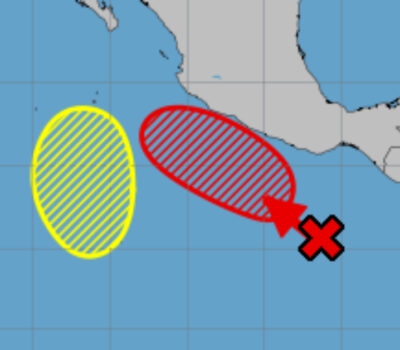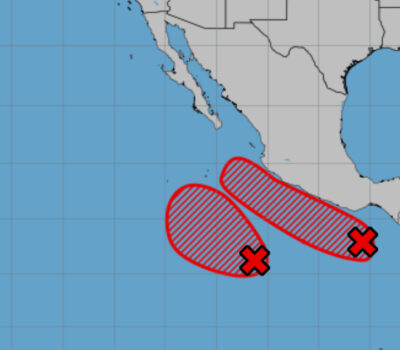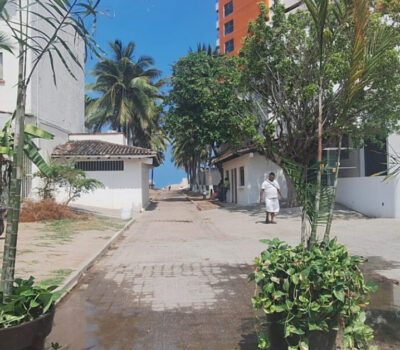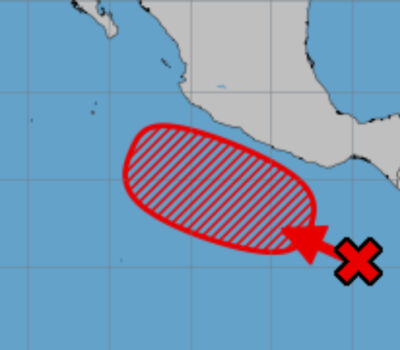Puerto Vallarta, Mexico – The National Airport Infrastructure Plan 2025-2030 outlines 126. billion pesos in investments to rehabilitate 62 airports, modernize air travel, and support transportation jobs.
The Ministry of Infrastructure, Communications, and Transportation (SICT) announced this week that 62 airports nationwide will undergo rehabilitation and expansion under the new National Airport Infrastructure Plan 2025-2030. The combined public and private investment for these projects will total 126.609 billion pesos.
Undersecretary of Communications and Transportation Tania Carro Toledo unveiled the plan at the 4th National Transportation Infrastructure Forum, hosted by the College of Civil Engineers of Mexico (CICM). She emphasized that these airport upgrades aim to strengthen regional connectivity, improve passenger experience, and generate more employment opportunities.
“In 2025 alone, we will invest 33.728 billion pesos in the aviation sector,” said Carro Toledo. “Our goal is to modernize air infrastructure and support more than one million direct jobs in this field.” Currently, Mexico’s air system comprises 80 airports, 1,529 airfields, and 584 heliports. The new plan focuses on bringing key airports up to higher safety and service standards.
Carro Toledo explained that the SICT’s aeronautical policy aligns with existing regulations to promote a balanced expansion of the sector. She highlighted the roles of key agencies:
- Federal Civil Aeronautics Agency (AFAC): Oversees compliance with safety and operational standards.
- Mexican Air Navigation Services (SENEAM): Coordinates air traffic control and navigation.
- Airports and Auxiliary Services (ASA): Manages operations and maintenance for the majority of federal airports.
“Training personnel remains our top priority,” Carro Toledo said, “so we can ensure modernized facilities match well-prepared staff.”
In addition to aviation, the SICT provided an update on federal trucking. Mexico’s fleet now exceeds 1.9 million units, including over 1.4 million cargo vehicles and 186,000 passenger and tourism buses. The trucking industry represents 5.9 percent of gross domestic product and sustains 2.3 million direct jobs. According to the undersecretary, maintaining and expanding road infrastructure will safeguard this vital sector.
Road safety is also a key focus. The SICT has partnered with the National Guard, the Secretariat of Security and Citizen Protection (SSPC), and the Executive Secretariat of the National Public Security System. Together, they will bolster traffic surveillance and crack down on irregular transportation services. Measures include streamlining towing operations, digitizing permits and licenses, and enforcing compliance among private carriers.
During the forum, SICT coordinator of advisors Javier Villazón Salem, representing Secretary Jesús Antonio Esteva Medina, stressed the need for decisive action given Mexico’s changing economic conditions. “We need firm measures to keep up with demand,” he said. “Through initiatives such as Plan Mexico and coordinated efforts with the business sector, we will deliver infrastructure growth that matches our economic objectives.”
Finally, SICT Director of Highway Maintenance David Calderón highlighted the agency’s commitment to preserve the Toll-Free Federal Highway Network. This system spans more than 40,000 kilometers, including just over 10,000 kilometers of trunk roads that carry over 80 percent of the nation’s commercial cargo. “Keeping these routes in top condition is essential,” Calderón noted, “because so much of Mexico’s trade and tourism depends on reliable highways.”
Key Takeaways:
- 62 airports will be expanded or refurbished under a 126.609-billion-peso plan.
- In 2025, an investment of 33.728 billion pesos is earmarked for aviation projects.
- Mexico’s air network includes 80 airports, 1,529 airfields, and 584 heliports.
- The trucking sector accounts for 5.9 percent of GDP and employs 2.3 million workers.
- Road safety efforts involve coordination with the National Guard and the SSPC.
- The Toll-Free Federal Highway Network carries more than 80 percent of commercial cargo.
By investing in both air and ground transportation, the SICT aims to foster economic growth, create jobs, and improve safety nationwide. The National Airport Infrastructure Plan 2025-2030 marks a significant step toward modernizing Mexico’s transport network and meeting rising demand from travelers and businesses alike.
Puerto Vallarta, Mexico - The National Airport Infrastructure Plan 2025-2030 outlines 126. billion pesos in investments to rehabilitate 62 airports, modernize air . . .












